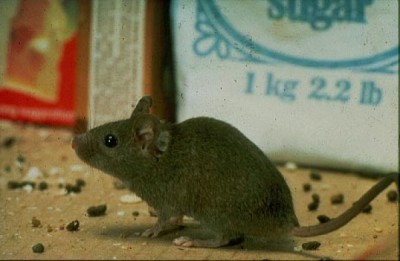 Light: Â Exposure to light can cause degradation of taste, appearance and nutritional quality of food. Fat soluble vitamins and proteins are most likely to be affected by light. Store your food in opaque containers.
Light: Â Exposure to light can cause degradation of taste, appearance and nutritional quality of food. Fat soluble vitamins and proteins are most likely to be affected by light. Store your food in opaque containers.
Temperature: Improper temperature for storage causes nutrient loss and degrades the texture of food. Essentially, food that’s too hot begins to cook and decay, and food that’s too cold begins preserving. Between 40-70 F is best, and in general closer to the cooler side is desirable. The storage life of most food products is cut in half for every increase of 18 degrees Fahrenheit. In a garage or attic, temperature may fluctuate between too hot and  too cold because these places usually don’t have insulation or controlled heat  and air conditioning.  Consider both temperature and consistency of temperature when choosing a LTS location.
Humidity / Moisture:Â Â Too much moisture promotes an atmosphere where microorganisms can grow and chemical reaction in foods causing deterioration that ultimately can sicken us. Â Mold in your food is no bueno. Some foods stored in a root cellar situation need a certain amount of humidity, but it’s typically in a specific range. Root cellaring is typically storing food for weeks or months too, and not years.
Pests: Insects and rodents can ruin your LTS if they manage to invade.  Sometimes grains can have an undetectable insect infestation that will eventually become apparent, which is why some people freeze grains and flours before storing.  Others include diatomaceous earth in their packaging, which deters pests, but doesn’t harm humans.  Rodents can be very persistent. If they’re hungry enough, they will get through even the strongest packaging. That’s why you should invest in some 5-gallon food grade buckets for your food and consider traps or repellents in your LTS area.
Oxygen / Air:Â Â The presence of oxygen allows bacteria, microorganisms and pests to thrive and survive in your food. Â In addition, many nutrients oxidize in an oxygen rich environment. Over time, oxygen changes the appearance, flavor, and texture of food. When fats oxidize they become rancid.
Time: It marches on, and everything gets old and loses taste, texture, nutrition, or even becomes inedible. Â Rotating your food storage is important unless you are talking about very long storage foods (25+ year stuff that you buy, store and “forget”).
Human Nibblers: Kids seeking snacks. Â Husbands seeking snacks. Â While neither is likely to get into a bucket of lentils, no pack of granola bars is safe in my house. Â I have to admit to being guilting of popping open a can of Thrive freeze dried yougurt bits; and those things, my friends, are not cheap! Â If possible, store foods that tempt your human nibblers out of sight, repackaged to camouflage them.
Improper Packaging &Â Improper Handling: The issue here is that doing either thing can compromise your food and allow one of the other threats to your food storage to get a foothold and start degrading your supplies. Â A small crack in your bucket, storing food with too many or too few oxygen absorbers, using non food grade containers that leech chemicals into your food – just a few things you might inadvertently do rendering all your effort and money moot.
Storing food is insurance; do it right.
